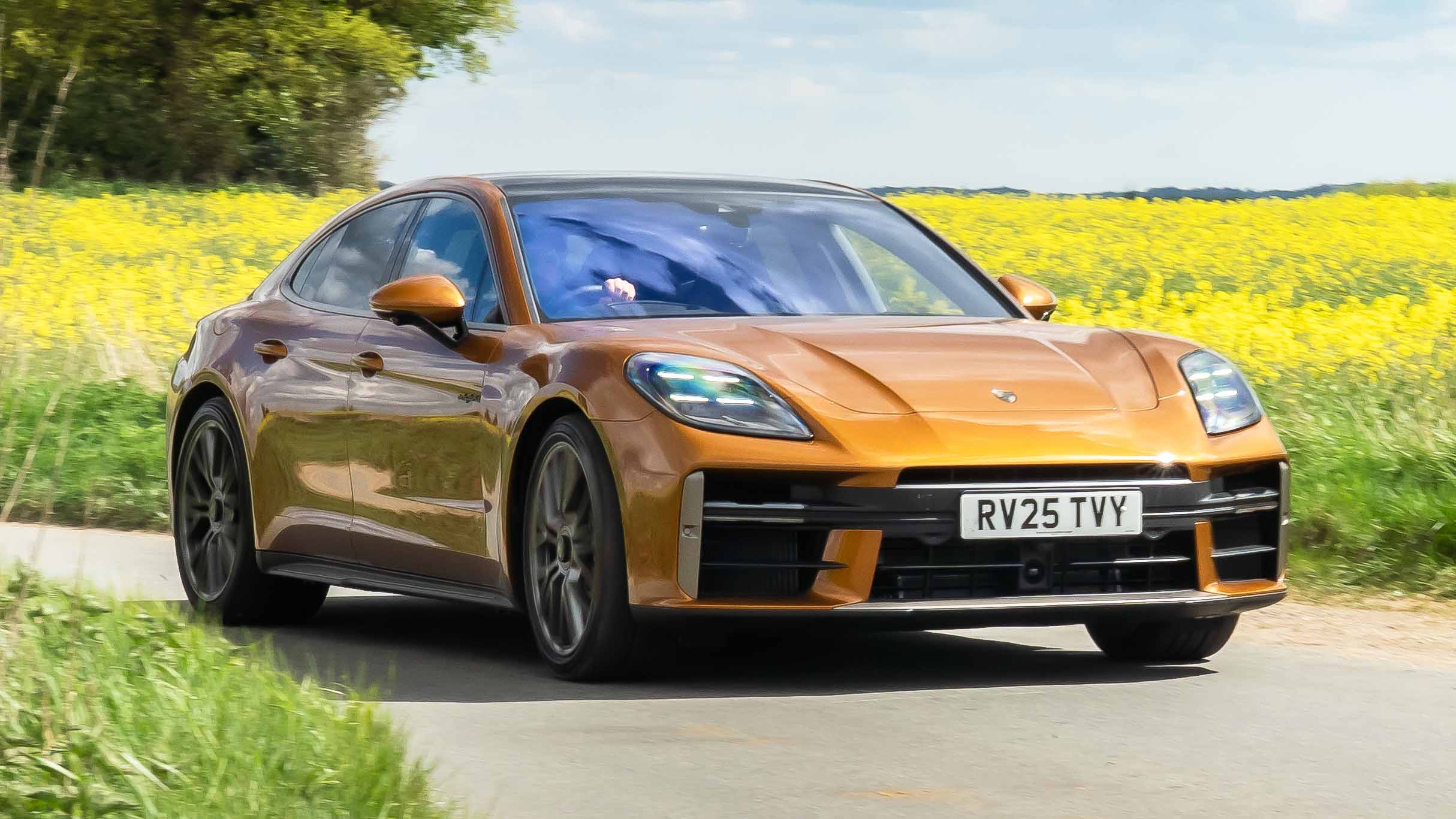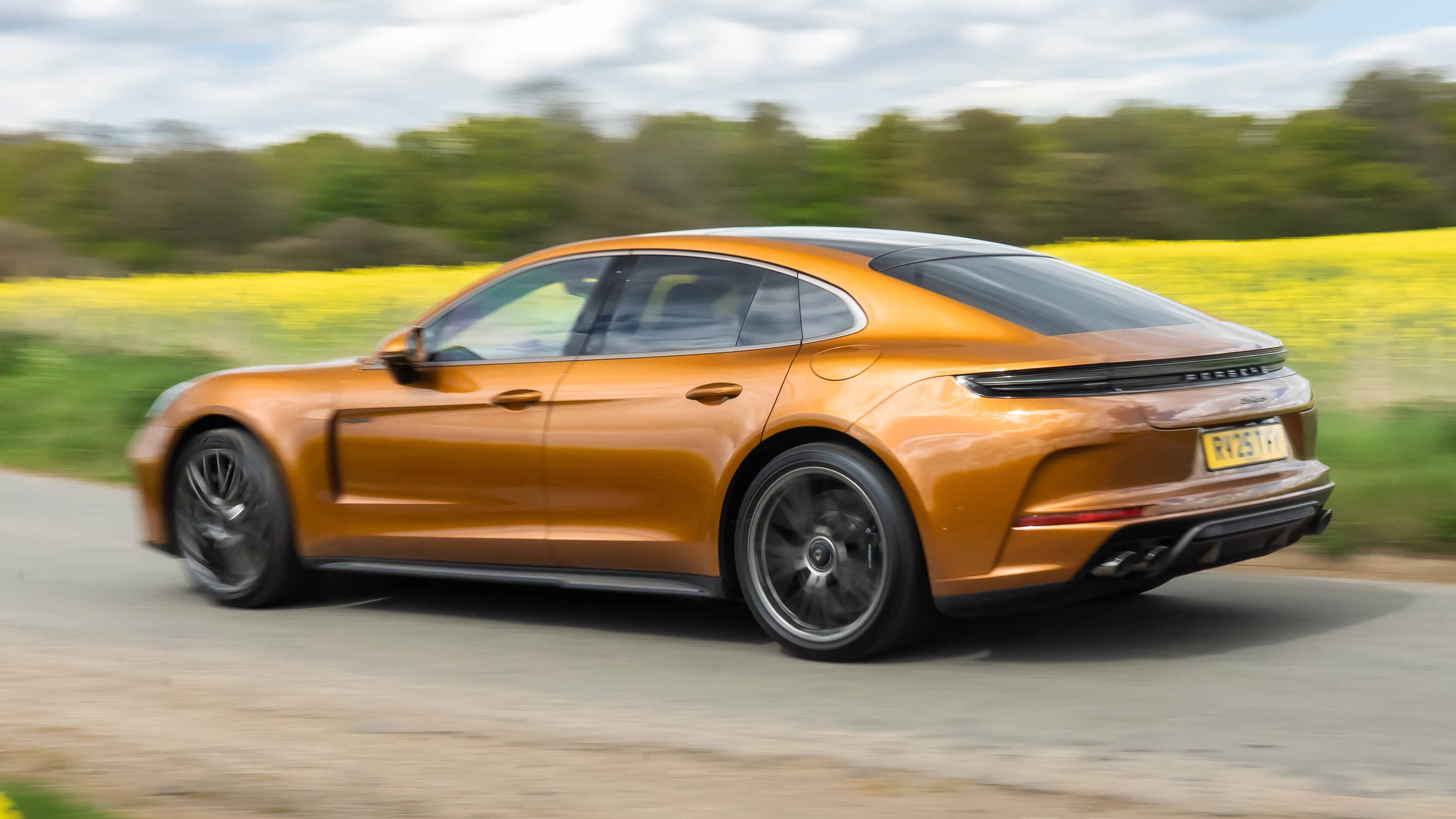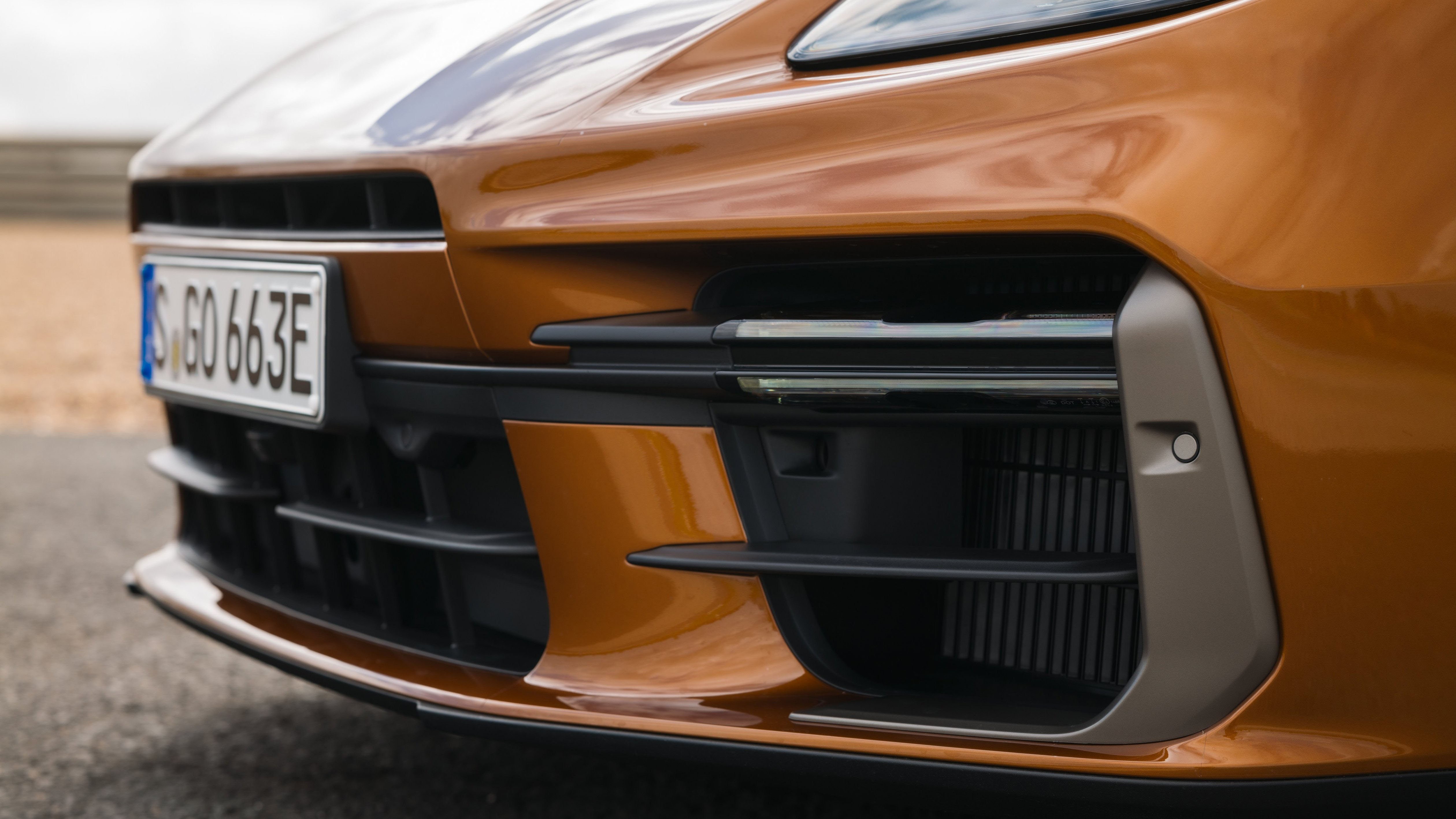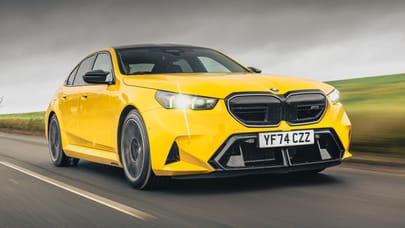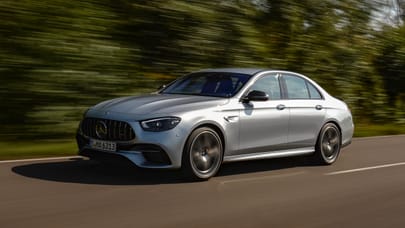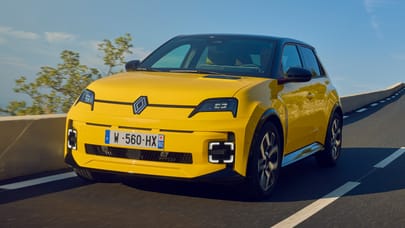
Good stuff
Amazing active suspension, well-integrated hybrid powertrain, effortless speed
Bad stuff
Rear is tight for adults, base V6 not very quick, Sport Turismo wagon is no more
Overview
What is it?
Here's a new generation of the Porsche Panamera. As before it's a slinky-looking front-engined sports car with space for four adults, and a decent hatchback boot. What's new is a mild body redesign and an astonishing active – not adaptive, active – suspension system on the Turbo E-Hybrid.
Is it just us or is the Panamera a car that's unfairly ignored? It's surely the last car anyone thinks of when playing word-association with 'Porsche'. People like us would mention the 911 or Cayman or Boxster, and then the high-profile Taycan EV. The rest of the world will think of the big-selling SUVs. Nor is it the first car that springs to mind when you say 'super saloon' and everyone else says 'M5'.
Cars with few rivals sometimes do get forgotten, and sure enough the Panam has few rivals. It's not a hotted-up saloon or estate. It shares a platform with the Bentley Flying Spur, but it's more agile than that. Maybe the closest rival is the Mercedes-AMG GT four-door.
The rest of the world might forget the Panamera but Porsche hasn't. It's back and it's both more dynamic and more comfortable than ever.
More dynamic and more comfortable? How’s that?
The active suspension is top of the bill, but we’ll deal with that little package of miracles separately as it’s quite involved and completely unseen.
Much like the bodywork itself. Subtly redesigned, let’s call it. The nose is more sharply defined and the headlamps squarer. Around the back, the light cluster is a simpler rule across the entire tail. The third side window now has a kink in its outline. Not so Porsche, that.
Inside is a new dash, with more screens and touchpad controls. A little worrying.
Next on stage, amping things up, are the powertrains. And there are many. The hybrid's battery is bigger and the whole system is itself given a gee-up: in combination with the V8 petrol engine, the Turbo E-Hybrid swings with 671bhp and four-wheel drive. The range-topping Turbo S E-Hybrid hits even harder with 771bhp and a 0-62mph time of just 2.9 seconds with the optional Sport Chrono Pack fitted. The 4 E-Hybrid and 4S E-Hybrid have been given a similar electric boost, resulting in 464bhp and 537bhp total, both with a 2.9-litre V6.
The entry-level Panamera and Panamera 4 meanwhile get improvements to the turbocharged V6 for 348bhp. They have conventional air suspension with adaptive dampers, with the former rear-wheel drive and the latter all-wheel drive. Then there's also the GTS, complete with a non-hybrid V8 and 493bhp. That’s the least efficient Panamera (22.7mpg), and the one keen drivers are most likely to get excited about. Provided they can look past the Turbo S’s 771bhp output…
But under it all, the platform, much sheetmetal and even the doors are carried over from the existing car. Which we liked very much anyway. Sadly, our bodystyle of choice, the Sport Turismo quasi-estate, is deceased. Never found a global audience apparently.
You seem eager to talk about this funky suspension…
Yes, the Porsche Active Ride Suspension – PARS. It’s only available on the hybrid models, and while standard on the flagship Turbo S, on the rest it’s a £7,182 option. It makes a much bigger and more worthwhile difference than carbon ceramic brakes though.
While the car's weight is supported on air springs, all the actual springing is done by a set of oil actuators, one for each wheel, that also replace the shock absorbers and anti-roll bars.
Get out of the car for a minute and imagine you're standing on a platform that's randomly bouncing, tilting and pitching. You keep your head and body steady by using your muscles and balance system, flexing your knees and ankles. All the time you're using your balance sensors (in your ear) to keep track of the horizon and the accelerations, and your sense of touch to know where your feet are and what dynamic weight they bear at any moment.
The Porsche has a balance system: accelerometers, position sensors and actuators to do the same job. And so like you it can actively stabilise its upper body while making the wheels follow the road. Not as well as you can, but for a car it's spectacularly good.
Does this suspension have different modes?
It has two main behaviours, depending on the drive mode you selected. In Sport and Sport Plus, it tries to keep the car level, killing roll, pitch and dive. That keeps the tyres dead upright on the road and the body stable, for maximum agility and grip. It also lowers the ride height.
Rather more spectacularly, in the more comfortable Hybrid mode, once you're above 30mph it banks into the bend – the opposite of roll. It's like an aircraft, high-speed train, or bike. It means everyone is held more comfortably in their seat.
Because the system can quickly lift a wheel up into the body or push it down, it copes amazingly well with big bumps and dips. There are other tricks too, most notably that when you unlock and open a door, the whole car instantly lifts to make it easier to get in. So don't put a cup of hot coffee on the roof when you open the door, or it'll likely get thrown off and tipped down your clothes.
The motors that drive the four hydraulic pumps are 400V jobs, each of them capable of drawing 5kW at peak. That's why you can have the system only on the E-Hybrids.
To be honest, a car as low as the Panamera can manage without this system, but it'll surely be transformative when Porsche starts putting it onto the taller SUVs, where it's otherwise much harder to reconcile body control with ride comfort.
And does it actually improve the drive?
Remarkably so. It really does give the ride of a luxury car when that's appropriate, but the zap of a hunkered-down sports car at the turn of a switch. More on that in the Driving section of this review, as well as on the searing power of the Turbo versions. And indeed the boggo Panamera and Panamera 4, which is a good car even if doesn't have the engine excitement you might feel entitled to expect from a Porsche.
How is the Panamera as an everyday five-door car?
The low-slung driving position and supportive seats are as appropriate to commuting and motorway hauls as they are to a high-g workout. There is space for two adults in the back (plus an extra child if you spec the £719 4+1 seating configuration), although they won't be able to stretch. At all. That's despite the Panamera being over 5m long and almost 2m wide.
The boot's OK and the seats do fold, though this is no estate. RIP, Sport Turismo. The screen systems are smart. There's heaps of luxury equipment if you tick the boxes. It rides placidly, even the ones without the fancy suspension.
How much will it cost me?
Here in the UK, prices start at £89,400 for the rear-wheel drive, V6-engined Panamera. That’s a whole heap of money for an entry-level 348bhp saloon that needs a bit of spec thrown at it. We'll cover the rest of the different variants over on the Buying tab, but just know that the top-spec Turbo S E-Hybrid kicks off at a faintly terrifying £175,100. And that's before you've begun ticking boxes on Porsche's infamous configurator.
Our choice from the range

What's the verdict?
Although Porsche calls this an 'all-new' Panamera, it's really a deep work-over of the previous one. Which is fine. It remains a unique proposition: a lively front-engine sports car from the door pillars forward, but a capable five-seat GT from there aft.
As usual with a Porsche, it feels solidly built, and every control has a satisfying precision. It's refined and comfortable. All of which makes it luxurious, never mind the fancy options you can pile on.
It's engaging for a proper drive. Even the regular suspension has a good spread between comfort and sport. The Turbo S E-Hybrid's underpinnings are a remarkable step onward, and they're mated to spectacular straight-line performance and traction.
But more than that it’s a car with no natural rivals. Hence why it’s forgotten by many as they cross-shop other £100k+ four doors. Pity: it’s ability to deliver silken haymakers is unparalleled.
The Rivals
Trending this week
- Long Term Review
Living with a Honda Civic Type R: bad bits, good bits




